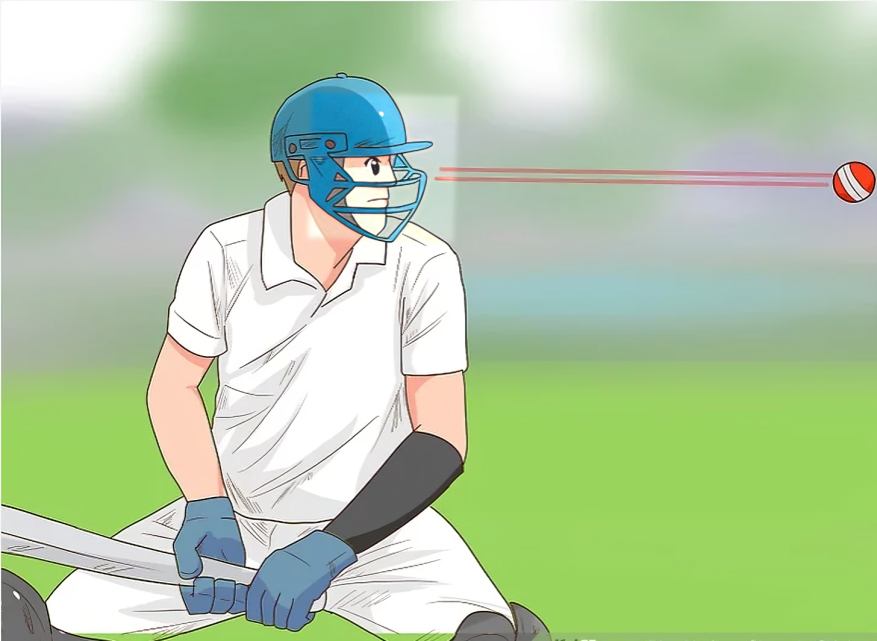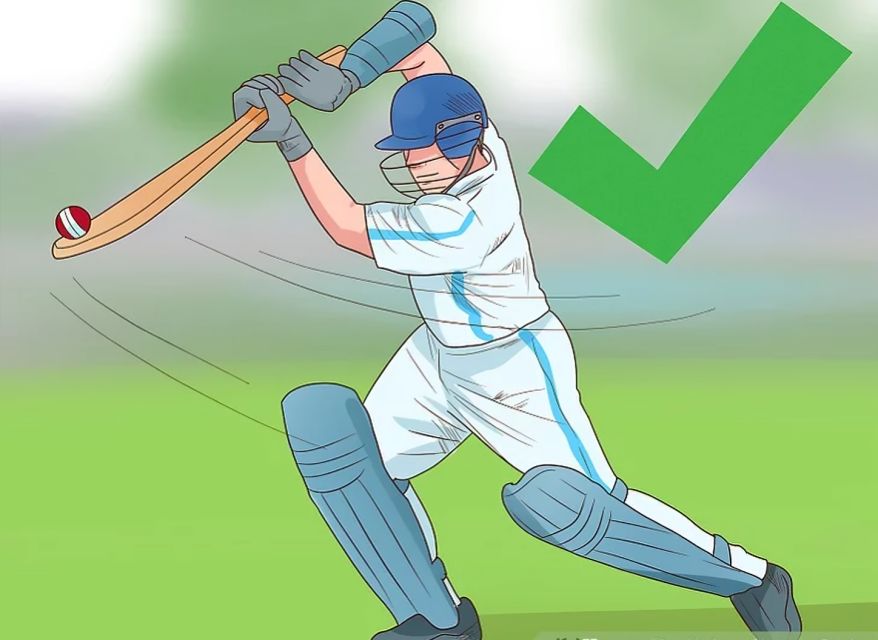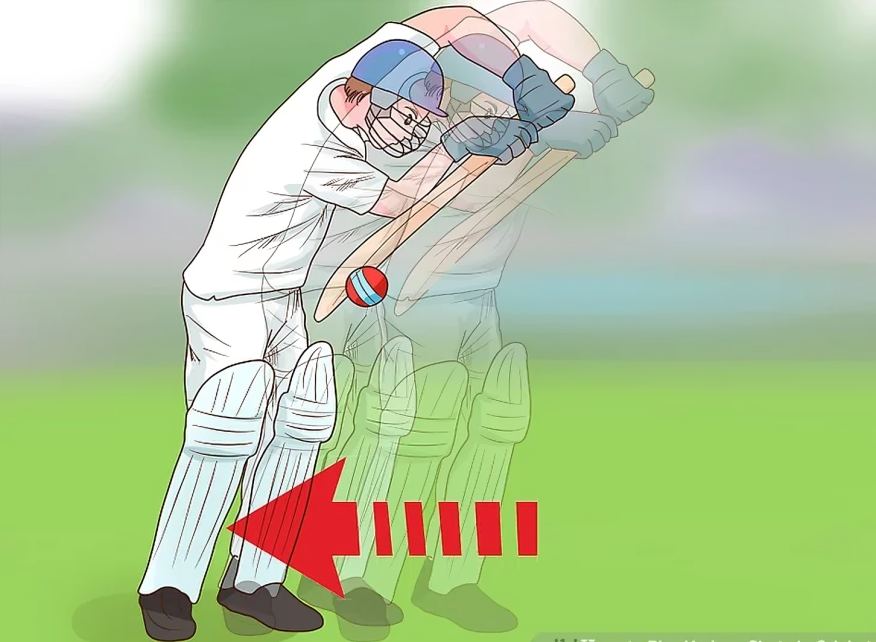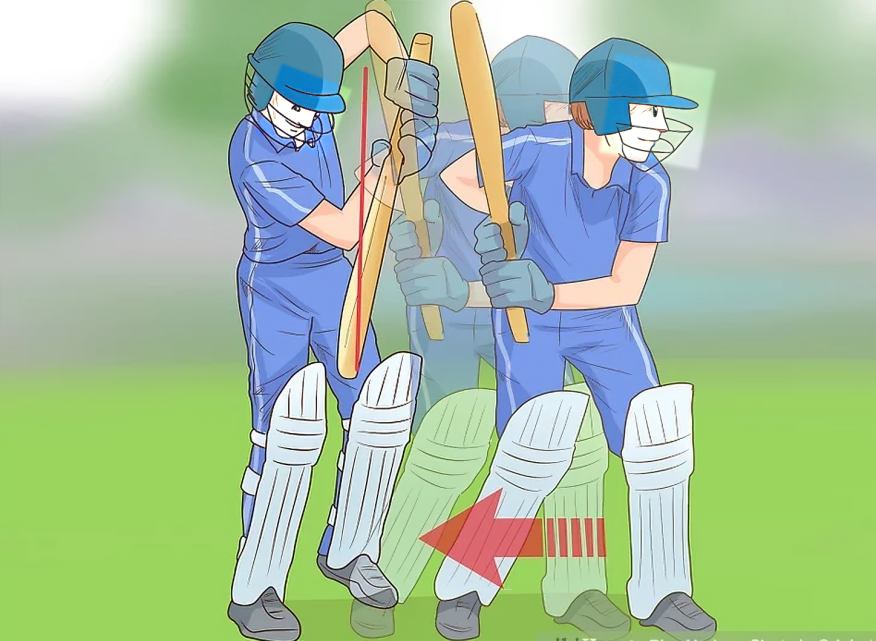Hitting a scoring shot in cricket can be tough, especially if you don’t know the right shot for the situation. A good batsman needs to have good hand-eye coordination, quick reflexes, strength, speed, and good judgment. Additionally, a strong batsman needs to know the rules well and understand cricket strategy and tactics. Learning and practicing different shots and knowing when to use them will help you play better and score more runs.
Table of Contents
Method 2: Batting Basics

Decide whether to hit the ball or defend the stumps. Factors influencing your decision include the speed and quality of the ball, as well as the type and length of the match.
- In shorter matches, batsmen often take more attacking shots to score quickly.
- In longer test matches, which can last up to five days, players usually play more defensively.

Move forward or back. Front foot shots are usually played for balls between ankle and thigh height. Back foot shots work best for balls between thigh and head height. When you know the height of the incoming ball, shift your weight to the front or back leg to play the right shot.

Keep your eyes on the ball. Watching the ball is important because it helps you know when and where to hit it.

Avoid getting out in cricket by following these simple rules when batting:
- Prevent the ball from hitting the stumps.
- Avoid being hit on the legs by the ball in front of the stumps to prevent getting out leg before wicket (LBW).
- Do not give catches to any fielders.
- Avoid edging the ball to the wicketkeeper.

Hit the ball with the bat in the right place, at the right time, and with enough strength to avoid the fielders. Becoming a great batsman requires a lot of skill and practice. Be patient and wait for the right moment to hit the ball.
Method 2: Hitting Front Foot Shots

Play a forward defensive shot. Not every cricket shot scores runs. When the ball is bowled well, use a forward defensive shot to avoid getting out. A strong defense is important to be a good batsman and enjoy the game.
- Tilt your head and front shoulder forward. Step forward with your front foot while keeping your back leg straight.
- Swing the bat down and hit the ball as it comes below your eyes. Keep the bat angled so the face is facing the ground.
- The bat should finish slightly ahead of your front leg, near your pad. Don’t follow through. Keep the heel of your back foot off the ground and hold the position to best block the ball.

Play a straight drive. This Batting shot is usually played when the ball is delivered on the middle or off stump. It is one of the most common shots and is often the first learned by cricket players. Depending on the ball’s direction, this shot can be called a cover drive, off drive, straight drive, on drive, or square drive.
- Lean forward and step with your front foot. Bend your front knee. This helps create a strong base for the shot.
- Your head should be ahead or level with the front knee, and your back foot should be on the toe during the swing.
- Swing the bat straight and hit the ball when it’s below your eyes. Keep your wrists relaxed and angle the bat to keep the drive low.
- Continue the follow-through in a straight line so that the bat face is facing the sky.

Play a sweep shot. This shot works well against spinners. When you see a ball bouncing low on the legside, use the sweep shot.
- Bend your head and front shoulder forward. Step with your front foot so your pad is in the way of the ball. Drop your back knee to the ground.
- Lift the bat high, then bring it down across your body. Hit the ball in front of your pad. Turn your wrists slightly when you hit the ball to make it go down.
- Follow through. After hitting the ball, bring your hands around so they are near your front shoulder, with the bat high in the air.

Play a front foot leg glance. This shot depends more on the speed of the ball than the strength of the hitter. A front foot leg glance is best for balls bowled to the leg side.
- Lean forward with your head and front shoulder. Move your weight to your front leg.
- Bring the bat straight through. Slightly angle the bat toward your front leg as you play the shot. Make contact just in front of your front leg pad.
- Flick your top wrist to direct the shot downward. This shot depends on control and precision rather than a powerful swing.
Method 3: Hitting Back Foot Shots
Play a back foot defense shot. When facing a fast bowler, this shot helps you stay safe and avoid getting out. If the ball is short but still near the stumps, this is a good way to handle it.
- Step back with your back foot towards the wickets. Keep your back leg inside the line of the ball. Keep your head forward and your back foot flat on the ground.
- Move your front foot towards the back leg, facing the bowler.
- Keep your arms high, and swing the bat straight down. Angle the bat toward the ground and hit the ball when it’s at eye level.

Play a back foot leg glance. The key to getting this shot right is using your wrists. Use it for balls that are short or full on the leg side.
- Quickly move both legs back towards the stumps. Keep your back leg aligned with the ball. Turn your body to face the bowler.
- Swing the bat straight through. Slightly turn the bat face towards the leg side and hit the ball in front of you.
- Roll your top wrist over to control the ball and direct it downwards. The top hand grip can be loose or tight, depending on how you want the ball to go.

Play a square cut. This strong shot can help you score many runs. Use this shot for short balls that are outside the stumps.
- Step back and across with your back foot. Start your backswing by turning your front shoulder and pulling the bat back.
- Swing the bat down and across your body. Fully extend your arms to create more power. Slightly roll your hands to make the ball go downwards.

Play a backfoot drive. This shot is like a backfoot defensive shot. Play it to a short ball to score runs.
- Move your front foot back as you start your backswing. Keep your weight slightly on your front leg. Keep the bat in line with the ball.
- Keep the bat straight as you swing. Use your top hand to control the swing, and push with your bottom hand for power.
- Follow through by bringing your hands high above your front shoulder.

Play a hook or pull shot. The steps for both shots are the same, but the pull shot is for balls that come to the waist level, while the hook shot is for balls that come between the chest and head. These shots are risky because there’s a chance of getting out. They need good footwork and hand-eye coordination.
- Step back and across with your back foot to open your chest slightly towards the bowler.
- Move your front leg back and out toward the leg side. Turn your body while keeping your eyes on the ball.
- Swing the bat across your body with a slight downward angle. Keep your arms straight and roll your wrists when you hit the ball to keep it down.

The follow-through can be done in two ways. You can lift the front leg and shift your weight to turn on the back leg. Or, you can turn both legs to follow the path of the ball.
Method 4: Playing Unorthodox Shots

To play a reverse sweep, you usually use it for deliveries that are pitched too high.
- Stand with your weight on your back foot. Keep your front foot raised, with the toes pointing straight or upright.
- Hold the bat horizontally, close to the pitch, with the face of the bat facing the opposite way.
- Swing the bat towards the offside, hitting the ball as soon as it touches the ground.

Try a switch-hit shot. This shot became popular when Kevin Pietersen used it in 2008. In this shot, the batsman changes which hand they use and their body position to look like a mirror image of their usual stance while the bowler is running in. Since the fielding team cannot move their players during the bowler’s run-up, they are caught off guard with the fielders out of position. The ICC confirmed that this shot is legal in 2008. However, it is a risky shot because the batsman is not as skilled with the other hand and might make a mistake when trying it.
